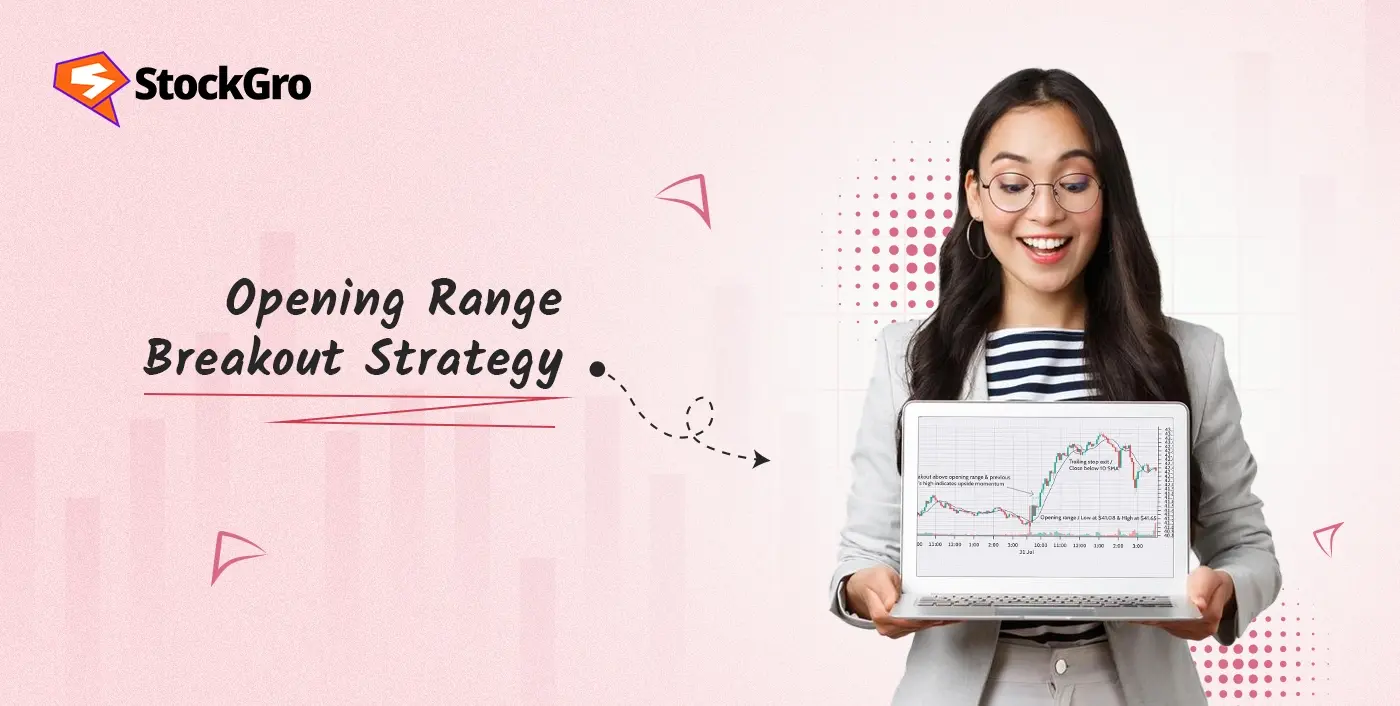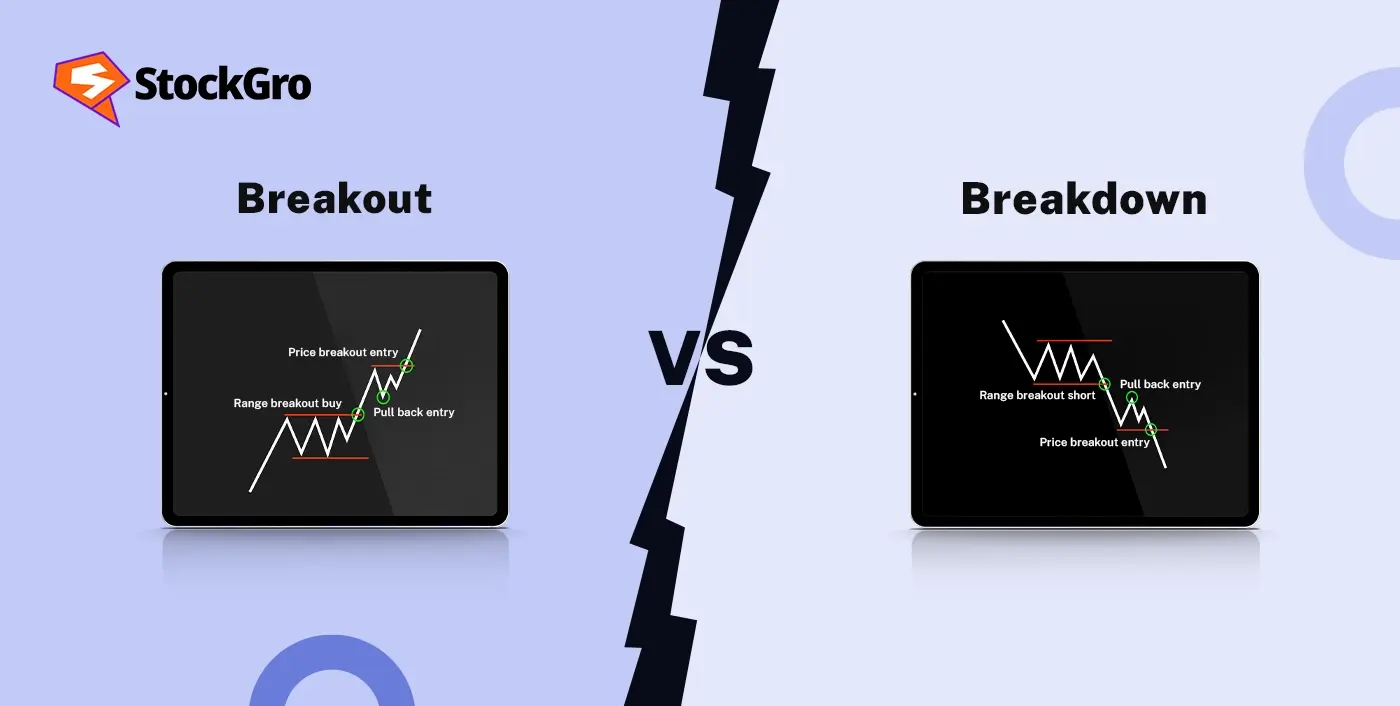
You might have watched the market showing a clear trend at 9:15 AM. But what if a stock gaps up and moves higher in the first few minutes? You will take the trade, but the price reverses sharply moments later, hitting your stop-loss.
You might get confused about whether to wait or exit the trade. Such situations can be overcome by learning the Opening Range Breakout strategy. It gives you a rule-based approach to spot breakouts early in the day. Let’s see the strategy and how you can use it to enter at the right time before breakouts.
What is the Opening Range Breakout (ORB) Strategy?
The Opening Range Breakout strategy is a best traders strategy who want to trade on strong momentum or volatility in the open of a trading session. After the first 15-30 minutes of the stock market opening session, traders watch how high and how low the price goes. If the price breaks the morning highs or lows, that’s the signal to enter the trade. So, now they can do breakout trading.
How does the opening range breakout work?
Prices jump around as traders react to overnight news and pre-market moves. This early movement creates what’s called the “opening range.” Most traders use 15, 30, or 60 minutes to define it.
Let’s see how ORB strategy works:
- If the price goes above the high, that could signal strength. A long (buy) trade might be taken.
- If the price drops below the low, that might point to weakness. A short (sell) trade may be triggered.
- Volume plays a big role. If more people are trading during the breakout, the move has better odds of holding up.
How to identify the opening range breakout setup?
- Do technical analysis of the first few candles after the market opens.
- Mark the highest price and the lowest price during that time. These are your range boundaries.
- If price breaks above the top line, that’s a possible buy signal. If it breaks below the bottom line, it might be a shorting opportunity.
How to calculate the opening range
- Use a 15, 30, or 60 minutes frame for the opening period.
- See the highest price and the lowest price during the morning session.
If it breaks out above high, it may attract buyers. If it dips below low, sellers may take control.
Key rules for trading ORB strategy
- Pick your time window: Start by selecting the time frame like 5, 15, 30, or 60 minutes to mark your range.
- Wait for a breakout: A breakout is the price that goes beyond the high or low of that range. For a long trade, let the candlestick close above the higher price range and below the low price if you want a short trade.
- Watch the volume: A strong move needs strong participation. If the breakout happens with more volume, you can take an entry. Weak volume could mean a fake move.
Best timeframes for opening range breakout
- 5-Minute Range: Great for active traders in fast-moving stocks or markets.
- 15-Minute Range: Used by most intraday traders.
- 30-Minute Range: Helps you avoid jumping in too early.
- 60-Minute Range: Used in calmer markets or for larger stocks that don’t move much in the first hour.
Indicators to use with ORB strategy
Here are the indicators traders should use with ORB:
- Volume: Without it, breakouts have a hard time holding up.
- VWAP (Volume Weighted Average Price): If a breakout happens above VWAP, it means buyers are in charge. Below it, sellers might be leading.
- Moving Averages (21 EMA or 50 EMA): These can show if the bigger trend matches the breakout. For example, buying above the range and above a rising 21 EMA gives you more conviction.
- ATR (Average True Range): This helps you understand how much a stock usually moves.
ORB with VWAP
Pairing ORB with VWAP makes your entry cleaner:
- For buy trades: Breakouts above both the opening range and VWAP are stronger. It shows buyers have control on multiple levels.
- For short trades: Price breaking below both the range and VWAP is more convincing.
- Avoid Trades that stall or reverse at VWAP.
ORB with Moving Averages
Moving averages can help you manage exits:
- Trade in the trend’s direction: Only take long trades when price is above your chosen moving average.
- Protect your profits: If price moves far from moving averages and then comes back through, it might be time to close the trade.
Example of an ORB trade
Let’s break it down with numbers:
- Hero MotoCorp trades between ₹4,422 and ₹4,560 in the first 15 minutes.
- At 12:45 AM, a 15-minute candle breaks ₹4,571 level.
- The volume on that candle is more than 50% higher than the previous candle.
Here’s what a trade could look like:
- Entry: Buy at ₹4,571
- Target: ₹4,597
You could take part of your profit there. If price closes back inside the range, exit the trade completely.
Pros of the Opening Range Breakout Strategy
- You know that you’re waiting for a breakout in your intraday trading. That helps cut down emotional decisions.
- This strategy gives you a chance to catch strong trends.
- You can use ORB on stocks, futures, forex to get regular volume and volatility.
- The rules are enough to be used by human traders or coded into a script.
Limitations of the ORB Strategy
- Sometimes price breaks the range but reverses quickly and these traps can be frustrating.
- The best trades don’t wait. You have to act quickly. If you’re slow, you might miss it or enter too late.
- Some stocks don’t move well after the open. Trying to trade ORB on those can lead to overtrading.
- Without discipline, you might end up taking every small breakout. That can drain your account and your patience.
FAQs
You must trade after the market opens during the first 15 to 30 minutes. This is when traders react to overnight news, pre-market earnings, or big events. Price action moves fast during this window, giving strong breakout signals. If the range is defined and a candle breaks above or below it with volume, that’s your trade.
The 15-minute range is the best timeframe for most traders using the ORB strategy. It’s fast enough to catch momentum early, but not so fast that it triggers every random move. A 5-minute range can be exciting for scalpers, but it comes with more risk. The 30-minute range is slower, but can work better on quiet days.
Yes, ORB is one of the simplest strategies beginners can start with. You need to mark the range, wait for a breakout, confirm with volume, and enter. Beginners can learn how price behaves after the open and build confidence with real charts. But they must still control risk, size positions properly, and avoid overtrading.
The Opening Range Breakout strategy cannot always work or give you a guaranteed win. Its accuracy is as per strength of the breakout, the volume supports it, and the market you’re in. Breakouts during earnings or news days often do better. You’ll also get better results if you filter setups with VWAP, ATR, or moving averages.
Yes, the Opening Range Breakout strategy can absolutely be automated. But many professional traders and institutions already use it to trade efficiently in both Indian and global markets. Moreover, the strategy can include filters such as ATR, RSI/MACD, or even time-based exits.

